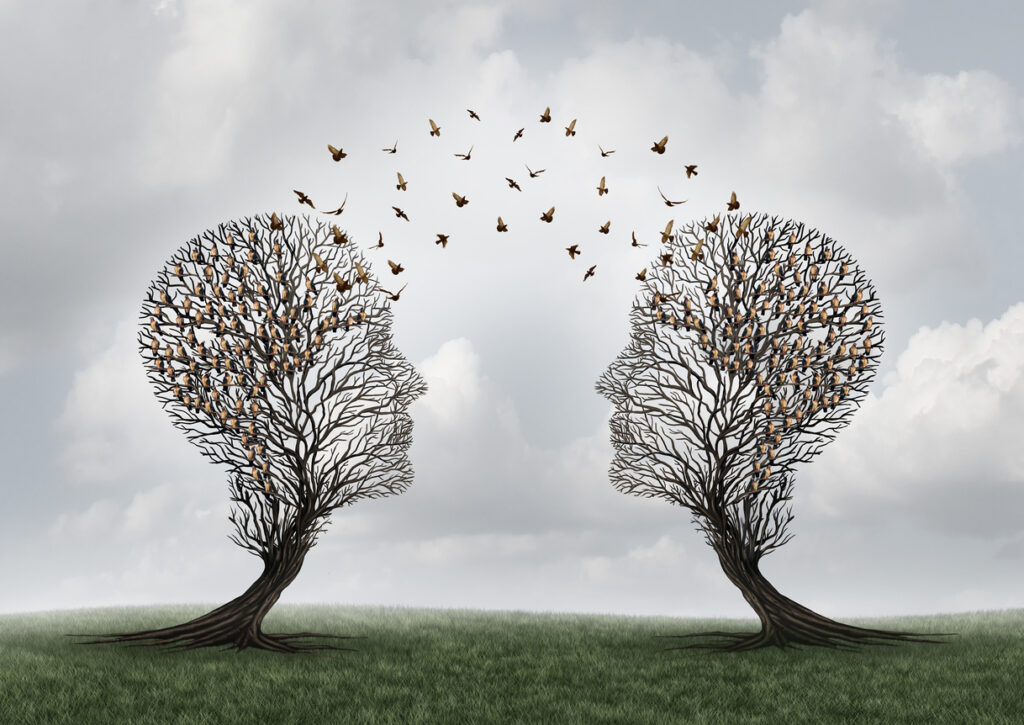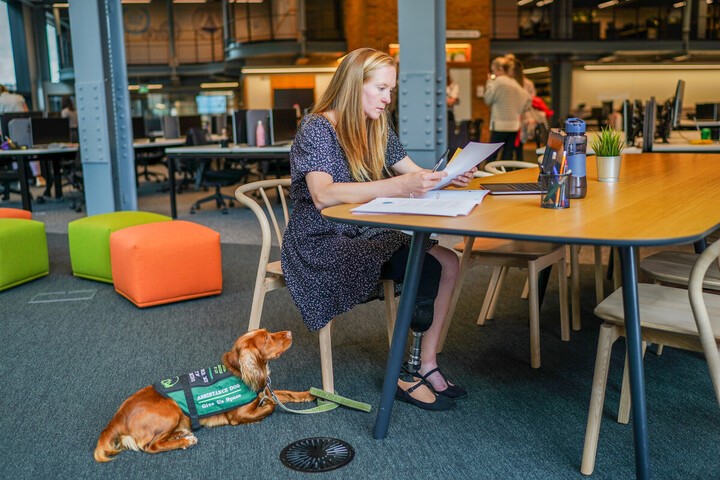Mismanaged or poorly handled conflict can result in significant financial repercussions for your business.
According to an Acas report, the estimated annual cost of conflict in the UK amounts to £28.5 billion.
However, the effects on individuals and the organisational culture could be even more profound.
Are there effective methods to solve disagreements within DE&I?
Fundamentally we have to respect that people have different perspectives and come from different lived experiences and someone being right and another being simply wrong is divisive.
Look at history – things have been right until they were wrong, from the discrimination of black people to the lack of equality for women, to prejudice against the LGBTQ+ community.
All are considered wrong in our culture now, but it takes evolution not just a revolution in people’s thinking.
Revolution can force us into a new polarised position. Take Northern Ireland; the conflict was only resolved when all parties were able to look for a new vision by asking what they wanted the future to be and what common vision and common ground could be signed up to.
However, people represent their communities and then have to get buy-in from those very people otherwise trouble will continue to bubble under the surface. Extremist minority views may still exist and need to be contained.
Fundamentally we have to respect that people have different perspectives and come from different lived experiences and someone being right and another being simply wrong is divisive
Good people having good conversations
We need to create space for good people to have good conversations but there may still be people who are unhappy at the end of the day.
One example is perhaps the slow increase in acceptance of trans people. Could we agree that we can resolve all trans arguments except perhaps trans people in sports? Is it better for the overall inclusion plan to agree that to progress and then go back to sort out the rest?
This approach can be divisive and leave sections of communities feeling disenfranchised. This is the challenge in Northern Ireland where past divisions still haven’t been fully resolved and some feel the original fight has to continue.
Creating a combined vision for the future
Healthy disagreements about tricky DE&I subjects usually have to be framed and may need to be facilitated to find a shared objective.
When there is mistrust, misrepresentation and strong feelings a skilled facilitator or negotiator can really help us achieve our objectives. The starting position is to get willing parties around the table.
You can’t brush conflict under the carpet, but some arguments have no practical consensus.
In a compromise, everyone feels like they are losing something. We need to accept we have different starting points and protected beliefs and let go of the challenges of the past to create a combined vision for the future and navigate that vision together.
We need to create space for good people to have good conversations but there may still be people who are unhappy at the end of the day
Eleven strategies for addressing inclusion-related conflict
1. Express opinions respectfully, promoting open dialogue and encouraging others to share their perspectives without causing offence
Listen actively and attentively to the thoughts and viewpoints of others, fostering a culture of understanding and empathy.
Enter into these conversations with respect for others’ views, reasons, lived experiences and problems to be able to share your own.
It is very possible to have a willingness to accept someone’s reasons without having to agree with the final outcome of their belief.
2. Be aware that your perspective might be influenced by a position of privilege
If you have been marginalised it can be hard to not feel dictated to by someone with privilege. We need to be very conscious of others’ lived experiences and our own privileges.
It can be very difficult for marginalised people to negotiate when they think you don’t care about them.
More often than not indifference comes from not knowing what someone else has had to go through but most of us have our own causes to fight so can feel empathy when we stop to think about it.
3. Check your own reactions
Understanding yourself and knowing how you react in situations of conflict can help you to be more in control of your behaviour and know what to do next time.
Are there any other factors involved that could explain your own and the other person’s reaction to conflict such as a build-up of stress, miscommunication or past experience?
When emotion is high, logic is low, and we are unlikely to respond favourably to anyone who tries to get us to see things in a more rational light.
More often than not indifference comes from not knowing what someone else has had to go through but most of us have our own causes to fight so can feel empathy when we stop to think about it
4. Set aside feelings of anger or frustration
Angry activists are rarely as effective in the workplace as an educator who wants to create change.
Move from a position of anger to discussion and negotiation. Anger creates conflict and is rarely productive. As they say: “Speak from the scar, not the wound”.
5. Work culture is crucial
It is vital to create a culture where respect for people’s opinions is held high and clear ground rules are set out about what is acceptable and what isn’t.
If it is clear what the company believes in and it has a strong stance then you can reference that ‘that is not what we do here’, which sets a framework for boundaries.
We need to coexist without having an argument but whilst always having conversations.
We don’t have to agree or even empathise, but we need to create a level of understanding and make sure it is known that each of us is not a threat.
6. Appreciate each other’s differences
Faced with conflict, our natural tendency is to try to persuade or to force the other to change their mind, attitude or behaviour, rather than educate with dignity about any differences between us.
We need diversity because it adds value and helps us to grow. The world outside needs to be represented in the workplace for the good of everyone.
It is vital to create a culture where respect for people’s opinions is held high and clear ground rules are set out about what is acceptable and what isn’t
7. Winning at all costs is rarely productive
Our innate drive to emerge triumphant in arguments or conflicts stems from our biological inclination to ensure survival, as unresolved disputes can leave us feeling unsettled.
For many individuals, winning signifies validation of their correctness, but it fails to effectively address the conflict, potentially leaving others feeling disadvantaged.
By reframing conflict as a quest for resolution, all parties can experience a sense of benefit and satisfaction.
8. Have a wide lens
Share your story, separate the people from the problem and focus on the future rather than the past.
People need to feel safe and have a sense of belonging at work. Work can be a sanctuary to create a safe space, educate and learn.
By engaging in empathy and storytelling, we can still foster change and create new narratives that transcend our pre-existing frames of reference. It is never too late to expand our knowledge and understanding
9. Check communication for parallel conversations
If we don’t really listen to one another and we don’t ask questions of the speaker, we interpret what they’ve said.
This results in a conversation edited by our own judgements, perspective, assumptions and biases, which hinders the process of resolving conflicts as it leads to conversations that have been edited and filtered through our own subjective lens.
Two individuals can hold contrasting perspectives on a given situation. The lens through which we perceive and interpret events is shaped by factors such as religious values, beliefs, experience, professional expertise, and attitudes influenced by age, gender, sexuality and race.
10. All of us can learn something new
By engaging in empathy and storytelling, we can still foster change and create new narratives that transcend our pre-existing frames of reference. It is never too late to expand our knowledge and understanding.
11. Ask for a mediator to facilitate better communication and resolve conflict
If direct, face-to-face communication is no longer possible and overwhelming mistrust and suspicion have manifested, the human, work culture and financial damage and costs will escalate.
If you enjoyed this, read: How to make your organisation more inclusive for nonbinary people
[cm_form form_id=’cm_65a14c3f5da64′]






